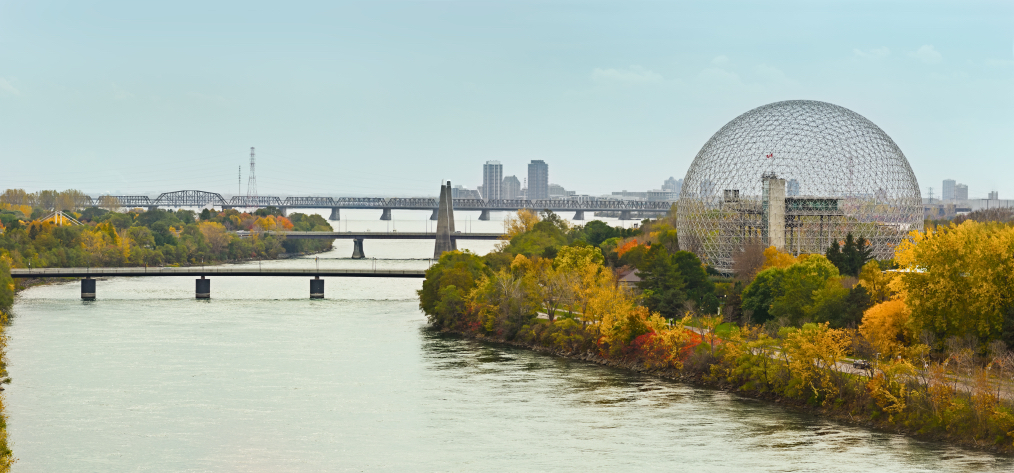What started as a measure of preventative maintenance, escalated into a federal election issue. News that the City of Montréal was set to release eight billion litres of wastewater into the St. Lawrence River spread quickly after the city received approval by the provincial government.
The discharge was to be released from 26 sewer mains along the north and south shores of the island for one week, starting on October 18th, in accordance with Quebec law. Yet the citizens of Montréal were outraged. The city held a news conference to defend its plan and the necessary construction. The Opposition parties in the Quebec National Assembly called on the Quebec Minister of Environment, David Heurtel, to resign for approving the sewage dump. By then over 55,000 people had signed a petition to stop the discharge from happening.
On Tuesday, federal Environment Minister Leona Aglukkaq stepped in and issued a statement: “The St. Lawrence River is one of Canada’s most important waterways, acting as a home to several species of whales and fish while providing millions of Canadians their drinking water. What’s more, it’s also enjoyed by many Quebecers for recreational purposes,” she said. Aglukkaq ordered that the federal government needed more time to assess the environmental impact of the proposal citing Section 36 (3) of The Fisheries Act.
Montréal Mayor Denis Coderre shot back at his own press conference. ” I’ve been doing my homework. There are some people that have been playing politics behind the backs of Montrealers,” he said. Even Erin Brockovich got a word in.
Montréal is forced to make a very difficult and unpopular decision, but it’s based on an assessment of the cost of alternatives and risks. “They are attempting to do preventive maintenance to the system to avoid a larger disaster,” said Sarah Dorner, Associate Professor in the Department of Civil, Geological and Mining Engineering and NSERC Industrial Chair in Drinking Water Treatment, at the Polytechnique Montréal. “You can’t stop the rain from falling,” she said.
Dorner, who is highly familiar with Montréal’s wastewater and drinking systems says the pipe in question is a huge pipe — up to 5.4 metres in diameter — that is approximately 35 meters underground. It conveys both wastewater and stormwater into one of the largest primary wastewater treatment plants in the world.
“The infrastructure problem relates to an interceptor that runs along both south-east shore of the island. It collects approximately half of all the sewage from the island, except for sewer overflows,” she said. When water floods through the pipe, it carries debris from city streets with it. Over time, certain parts of the receptor have broken down. So there is a great risk that the valve will becomes blocked open. The work cannot be conducted while there is water flowing in it, because its dangerous for the workers.
“If a blockage were to happen, you would end up with a continuous discharge into the river, and possibly even pump failure,” said Dorner. “We are talking about six cubic metres of raw sewage per second; and if you have pump failure, you can’t just replace it over night,” she said. Dorner explains that the proposed discharge to empty the pump will clearly have an impact, but when you compare that with what is currently already being discharged every minute of the day from the city, the human health risk is minimal. Since the system conducts only primary treatment (which does not disinfect) one must look as the concentrations of microbial contaminants to determine the risk to humans.
“From a drinking water perspective the increase in microbial contaminants is not changed by more than a factor of 2.5 because the system is already discharging at a fairly high concentration. They are discharging to the same order of magnitude, which is 10/6,” she said. Dorner explains that the only alternative to discharging in the river would be to build a containment unit that would cost between hundreds of millions and billions of dollars (to be used for just seven days). Some might argue that the storage could help with stormwater overflows, but the design wouldn’t necessarily be the same. It would take years to construct – years that the city does not have before they are dealing with a disaster discharge.
“Let’s face it, the discharge is permitted by the province of Quebec. Other municipalities are doing it too. There were 45,000 raw sewage discharges in 2013, and 15 per cent of those were done for infrastructure repairs, which is comparable with what the city of Montreal is planning,” said Dorner. “I would argue that the greater need to manage combined sewer overflows that are occurring fairly frequently.
There is a large dilution capacity of the river, which is part of the reason that Montréal is where it is.” The Water in the St Lawrence River flows at a rate of 6,000 to 7,000 cubic metres a second compared to the flow rate of the wastewater, expected to be just 13 cubic metres a second. “What concerns me more is the small rivers that have continuous discharges with numerous drinking water intakes on them; where the proportions of sewage to river flow is much higher. To me, these are the higher priority,” she said.









